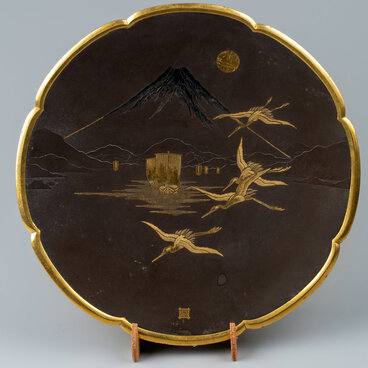A number of Chinese porcelain items are housed in the Samara Regional Art Museum. The vase with the image of the motif “The Three Friends of Winter” on a lemon background, in particular, arrests the viewer’s attention with its vivid colors. The “Three Friends of Winter” are plum, bamboo and pine, which since ancient times have symbolized longevity, fortitude and strength of one’s spirit for the peoples of China, Korea and Japan.
Chinese porcelain is one of the most important elements in Chinese culture and art. The history of porcelain spans more than three thousand years. Chinese porcelain, according to some scientists, appeared in the 2nd millennium BC, which is proven by archaeological digs carried out in the Yellow River Valley in China. However, a number of researchers call these finds “protoporcelain” (as it was simply made of white clay or kaolin) and do not convincingly indicate the exact date of origin of this material. In their opinion, porcelain appeared at the beginning of the 7th century AD, during the reign of the Tang Dynasty (618 — 907 AD).
In the Qing era (1644 — 1912), the production of all previously existing types of porcelain continued. The 18th century is considered the most brilliant period in the development of porcelain of the Qing era. The center of porcelain production since 1004 was the city of Jingdezhen. Jingdezhen factories produced high quality items. Polychrome glaze was used to cover the products. About three thousand kilns operated on the territory of the city and about a million people worked on the finest cups, plates and vases, which only emperors, members of the imperial family and favorites could use.
At the end of the 17th — beginning of the 18th century, merchants began to export high-quality Chinese porcelain into Western Europe. The Europeans were attracted by the refined shapes and the purity of the surface. Depending on the color of the prevailing enamel paint or glaze, the Europeans classified porcelain into families: the green, pink and yellow were the most popular.
Chinese porcelain is one of the most important elements in Chinese culture and art. The history of porcelain spans more than three thousand years. Chinese porcelain, according to some scientists, appeared in the 2nd millennium BC, which is proven by archaeological digs carried out in the Yellow River Valley in China. However, a number of researchers call these finds “protoporcelain” (as it was simply made of white clay or kaolin) and do not convincingly indicate the exact date of origin of this material. In their opinion, porcelain appeared at the beginning of the 7th century AD, during the reign of the Tang Dynasty (618 — 907 AD).
In the Qing era (1644 — 1912), the production of all previously existing types of porcelain continued. The 18th century is considered the most brilliant period in the development of porcelain of the Qing era. The center of porcelain production since 1004 was the city of Jingdezhen. Jingdezhen factories produced high quality items. Polychrome glaze was used to cover the products. About three thousand kilns operated on the territory of the city and about a million people worked on the finest cups, plates and vases, which only emperors, members of the imperial family and favorites could use.
At the end of the 17th — beginning of the 18th century, merchants began to export high-quality Chinese porcelain into Western Europe. The Europeans were attracted by the refined shapes and the purity of the surface. Depending on the color of the prevailing enamel paint or glaze, the Europeans classified porcelain into families: the green, pink and yellow were the most popular.



